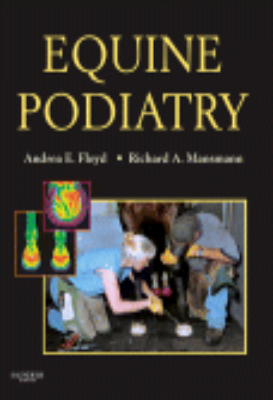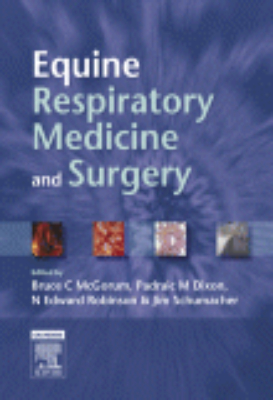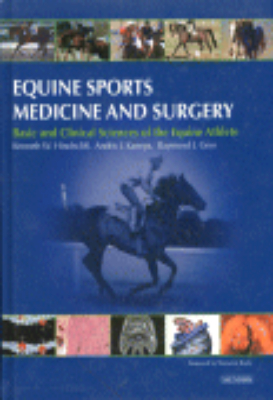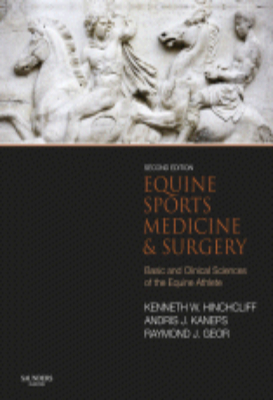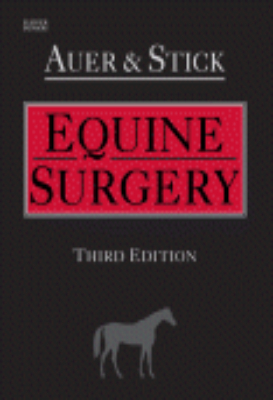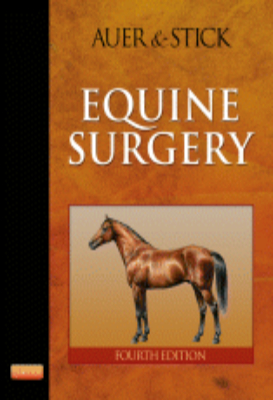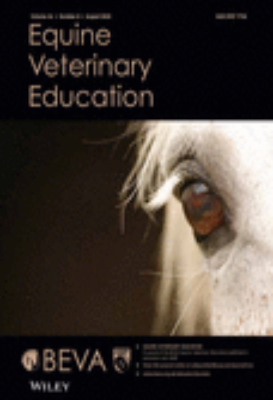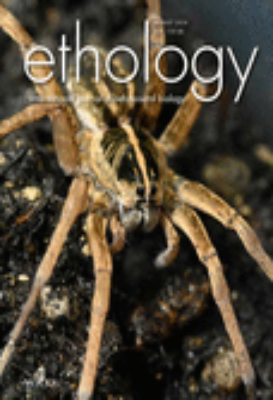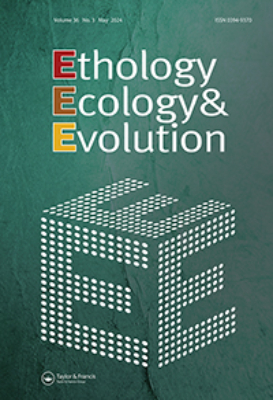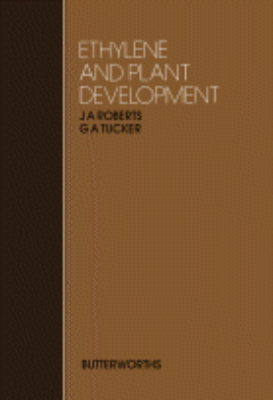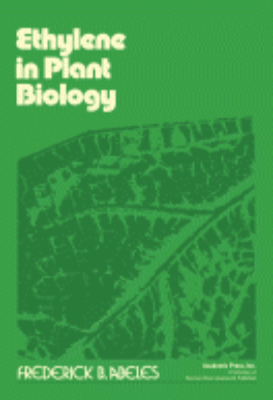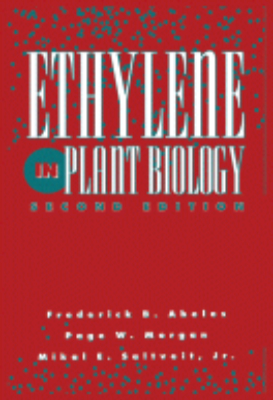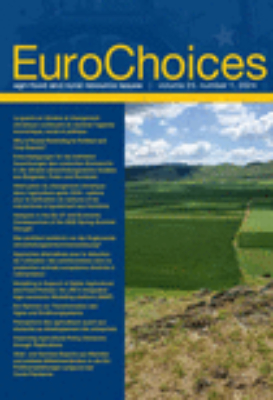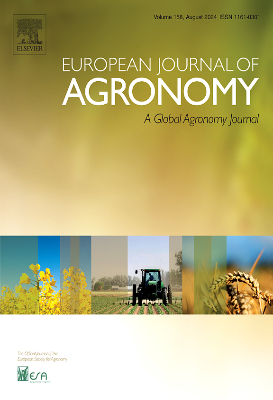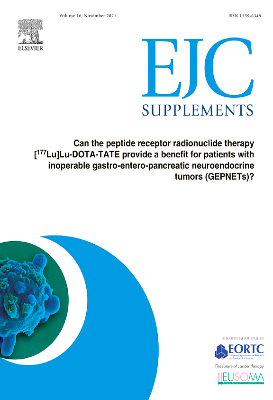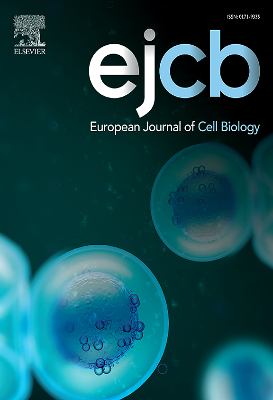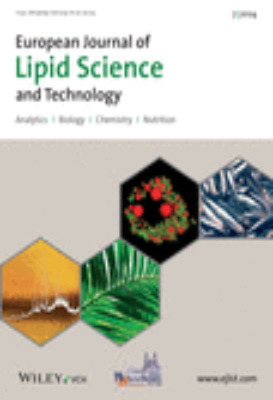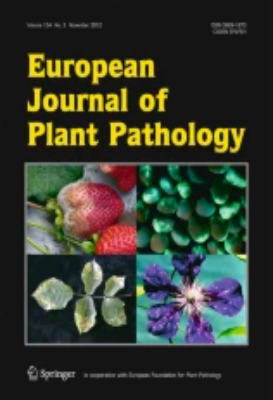E-Resources
Equine Podiatry
This comprehensive text not only covers basic principles of horseshoeing, but also focuses on medical and surgical foot care management. Starting with the anatomy and physiology of the equine foot, this one-of-a-kind book then evaluates the foot, its pathological conditions (including structural, developmental, and traumatic conditions in addition to laminitis), balancing and shoeing the healthy and diseased equine hoof, and ends with a chapter on new directions in equine podiatry, written by cutting-edge researchers in the field.
Equine Respiratory Medicine and Surgery
Equine Respiratory Medicine and Surgery provides the most up-to-date, in-depth coverage of the basic and clinical sciences required for management of respiratory disorders in the horse. The book provides a thorough grounding in respiratory physiology, examination techniques, and reviews each of the medical and surgical problems that may be encountered, organised anatomically and progressing in logical fashion from the upper airways, larynx and sinuses, through to the lower airways, the lungs and diaphragm. The text encompasses investigation and diagnosis of each of the common types of problem, including infections, allergy, trauma, cysts and tumours, and provides comprehensive guidance on both medical and surgical management.Key features include: High quality artwork, including relevant radiographic, ultrasonographic, CAT scan, and MRI images, to aid understanding and diagnosis/ integrated colour photographs throughout A truly international perspective A lucid, accessible pedagogic style to aid rapid reference The highly respected editors have brought together an internationally renowned team of contributors, producing the ultimate reference for veterinarians, students, and professional horse-owners.
Equine Sports Medicine and Surgery: 2004
Equine Sports Medicine and Surgery provides the most up-to-date, in-depth coverage of the basic and clinical sciences required for management of the equine athlete. The unique treatment of exercise physiology and training within a clinical context, together with detailed review of all diseases affecting athletic horses, makes this the most comprehensive text available.The book will provide a thorough grounding in the basic physiology of each body system, and in particular the responses of each body system to exercise and training, that will be separate, but highly relevant to, the succeeding sections on clinical disorders of each body system. The highly respected editors have brought together an internationally renowned team of 50 contributors, producing the ultimate reference for veterinarians, students, horse-owners, and all those involved in the world of equine athletics.
Equine Sports Medicine and Surgery: 2014
This unique resource provides the most up-to-date, in-depth coverage of the basic and clinical sciences required for management of the equine athlete. The unique treatment of exercise physiology and training within a clinical context, together with a detailed review of all diseases affecting athletic horses, makes this the most comprehensive text available. Provides a thorough grounding in the basic physiology of each body system, and in particular the responses of each body system to exercise and training. The internationally renowned team of contributors has created the ultimate reference for veterinarians, students, horse-owners, and all those involved in the world of equine athletics. "a signicant amount of practical information for use in the eld, as well as providing a sound scientic basis for therapy and understanding of the underlying pathology of the horse as an athlete."Reviewed by: John Bowers on behalf of Australian Veterinary Journal, May 2015
Equine Surgery: 2006
The most comprehensive text available on equine surgery, this book prepares the veterinary surgeon for managing each surgical condition by understanding its pathophysiology and evaluating alternative surgical approaches. Explanations describe how to avoid surgical infections, select and use instruments, and perfect fundamental surgical techniques including incisions, cautery, retractions, irrigation, surgical suction, wound closure, dressings, bandages, and casts.
Equine Surgery: 2012
The most comprehensive reference available on equine surgery, this book prepares the veterinary surgeon for managing each surgical condition by understanding its pathophysiology and evaluating alternative surgical approaches. Explanations describe how to avoid surgical infections, select and use instruments, and perfect fundamental surgical techniques including incisions, cautery, retractions, irrigation, surgical suction, wound closure, dressings, bandages, and casts.
Ethylene and Plant Development
Ethylene and Plant Development documents the Proceedings of the Thirty-ninth University of Nottingham Easter School in Agricultural Science, held at Sutton Bonington on 26-30 March 1984. The conference was entitled ""Ethylene and Plant Development"" and included a workshop, organized in conjunction with the Association of Applied Biologists, on the ""Practical control of ethylene in fruit, vegetables, and flowers."" This volume contains a mixture of review and research papers thus giving a thorough coverage on the subject. The workshop reviewed the practical methods and advantages of either applying ethylene to, or removing ethylene from, various commercial products. The rest of the conference dealt with the more fundamental aspects of ethylene synthesis and action during the developmental processes in which the gas is active. Emphasis was particularly placed on the effects of ethylene on gene expression and cell development since advances in these areas may eventually lead to a more scientifically-based control of ethylene levels and action within the plant.
Ethylene in Plant Biology: 1973
Ethylene in Plant Biology focuses on the role of ethylene in plant physiology and the interrelationship between ethylene, fruit ripening, and respiration. It summarizes the physiology, biochemistry, production, regulation, plant effects, metabolism, and mechanism of action of ethylene. This book presents an introduction to basic chemistry of ethylene and available techniques for its sampling and analysis. Then, it discusses the rate, environmental conditions, and reactions involved in ethylene production. Chapter 4 examines the effects of herbicides and hormones, such as auxin, gibberellins, cytokinins, and abscisic acid, on ethylene production. Meanwhile, the next chapter studies the so-called stress ethylene phenomenon in plants. In particular, this book examines the role of insects, temperature, water, gamma-irradiation, and mechanical and chemical stimuli in stress ethylene. The biochemical aspects of ethylene are covered in the subsequent chapters. These include its role in growth and development of plant, phytogerontological activity, role in ethylene synthesis, respiration, pigmentation, and hormone regulation. Chapter 9 presents the activity of ethylene relative to other hydrocarbon analogs and dose-response relationships for a number of ethylene-mediated processes. The concluding chapters tackle the attachment of ethylene to its site of action, including epinasty, root initiation, intumescence formation, and floral initiation. A discussion on the issue of ethylene air pollution is included. This book will be useful to both undergraduate students and professional workers, especially those who have background in plant anatomy, plant physiology, or biochemistry.
Ethylene in Plant Biology: Second Edition 1992
"Ethylene in Plant Biology, Second Edition provides a definitive survey of what is currently known about this structurally simplest of all plant growth regulators. This volume contains all new material plus a bibliographic guide to the complete literature of this field. Progress in molecular biology and biotechnology as well as biochemistry, plant physiology, development, regulation, and environmental aspects is covered in nine chapters co-authored by three eminent authorities in plant ethylene research. This volume is the modern text reference for all researchers and students of ethylene in plant and agricultural science. Key Features. Completely updated. Concise, readable style for students and professional. Contains an extensive bibliographic guide to the original literature. Well illustrated with diagrams and photographs. Thorough coverage of: ethylene and ethephon roles and effects stress ethylene, biosynthesis of ethylene, molecular biology of ethylene, action of ethylene, agricultural uses of ethylene"
Eukaryotic Cell Genetics
Eukaryotic Cell Genetics reviews the state of knowledge in somatic cell genetics. The book begins by discussing the development of somatic cell genetics, focusing on the estimation of mutation rates in mammalian cells, with frequent reference to the use of drug resistance as a selective character. It then considers some of the specific properties of such variants in order to understand their molecular basis. The subsequent chapters examine the properties of specific types of auxotrophic variants; the means by which eukaryotic cells may be reassembled to give rise to viable cellular composites; gene regulation in eukaryotic organisms; and chromosome mapping. The discussions also include differentiation in cultured cells; neoplastic transformation; the modulation of gene expression in cultured cells; mutation induction in cultured cells; applications of cell culture; and the mechanism of cellular aging. This book is intended for researchers in the fields of genetics and molecular biology, nonspecialists interested in what is happening in a very exciting area of biology, and students at the graduate level in cell biology.

